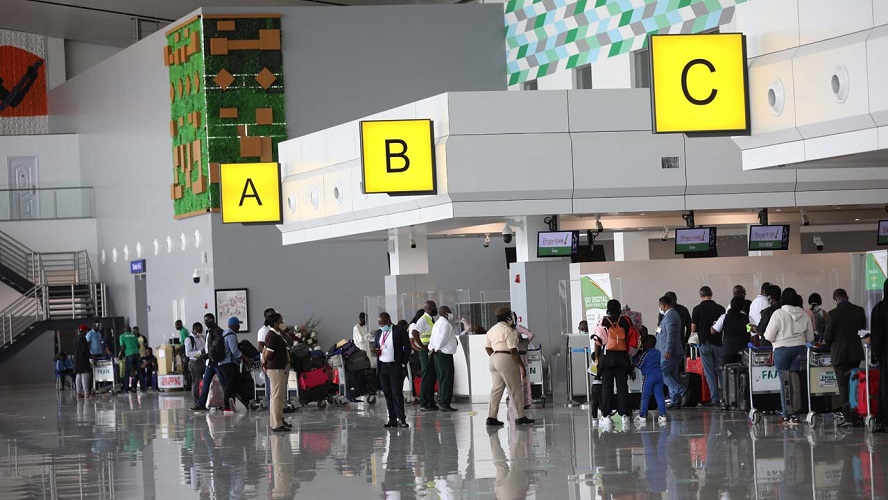The significance of customer experience in aviation recovery

Ekelem Airhihen, a trained mediator, chartered accountant, certified finance and IT consultant, certified in policy and public leadership, and an airport customer experience specialist, has an MBA from the Lagos Business School. He is a member, ACI Airport Non-aeronautical Revenue Activities Committee; and is certified in design and implementation of KPI for airports. He can be reached on ekyair@yahoo.com and +2348023125396 (WhatsApp only)
June 20, 2022850 views0 comments
The Economist reports that passengers queued for hours at airports in Europe from Mallorca to Manchester as flights were delayed or cancelled. Also, in America, nearly 3000 flights were scrapped in the four days around the Memorial Day weekend in late May. This large number of unsatisfied customers, the paper suggests, are a sign that air travel is returning to normal.
Data suggests that planes are getting back to the air at close to pre-pandemic levels as seen from OAG, a consultancy. The number of seats available on European airlines in the week commencing June 6 was only nine percent below the same week in 2019. In North America it was just 5.6 percent down.
Traffic on African airlines rose 116.2 percent April, 2022 compared to the same period in 2021. Capacity in April 2022 increased by 65.7 percent while load factor rose 15.7 percentage points to 67.3 percent, reports Punch newspaper, quoting the International Air Transport Association (IATA).
Indeed, Willie Walsh, chief executive officer of IATA, said in May, that the speed of the rebound meant that passenger numbers worldwide would match figures from 2019 by 2023, a year earlier than previously forecast.

This has also come with challenges such as staff shortages, high oil prices and scheduling difficulties due to surges in passenger numbers. To navigate through this period, customer experience will be a differentiator among players in the industry and will go a long way to determine who stays or bows out post pandemic.
Customer experience is the result of every interaction a customer has with your airport. Everything you do has an impact on the way customers perceive your airport. It affects their decision to either keep coming back or otherwise. A great customer experience is key to the success of any business.
Customer experience is not only a set of actions. There is focus on feelings. At every touchpoint, you can improve or destroy how your customers feel about your airport. At every touchpoint there are important decisions to make. The result of those decisions influence how successful your business will be.
To deliver a great customer experience is very important for any business. When customers have a positive experience, they are more likely to come back, they will give your airport positive reviews and the attrition that comes from customer complaints at your airport will be reduced.
In ensuring good customer experience, you have to realise that your airport is unique and so are your customers. Some general principles for a good customer experience are seen in asking your customers questions, listening to their responses and taking action on their feedback. Solve your customers’ specific problems and unique challenges to keep customers loyal to your organisation.
Every business in an airport has its own unique way of having what counts as poor customer experience. When the customer experience is positive, customers walk away from every interaction feeling happy and satisfied. A great experience during every customer interaction is compulsory for a customer to purchase, repurchase and stay loyal.
Laying out plans of action which are needed to deliver a positive, valuable and differentiated customer experience, irrespective of the customer touchpoint, constitutes a customer experience strategy. Take into consideration as much competitive insight as possible, consumer/marketplace research/data, strategic goals of your organisation, as well as strategic initiatives and value statements of your organisation.
A customer experience strategy must include all departments. It should not be restricted to only departments that interact with customers. Every employee must see themselves as serving the customer. Getting everyone to see the customer in their roles helps improve customer experience.
Research shows that one in four customers are willing to pay up to 10 percent more in almost every industry if they know they will receive excellent customer service. Once rapport is built and trust earned from the customer, it is difficult for a competitor to win them over. They are more likely to do business with your organisation after a mistake if your organisation provides excellent service.
Also, a research by Salesforce, which surveyed over 6000 consumers, found that 66 percent expected companies to understand their needs and expectations. Also, 82 percent of survey respondents expect retailers to be able to accommodate their preferences and meet their expectations (www.blog.hubspot.com – Customer experience trends. “9 Customer Experience Trends & Stats That’ll Define the Next Year” by Clint Fontanella).
Customers want to feel connected to their favourite brands. They also want the companies they buy from to know and respect them. One major way to be different in the face of competition is customer experience. The goal should therefore be that organisational customer experience strategy delivers personalised pleasing interactions at every customer touchpoint.
Generally, some issues that may cause poor customer experience are: Long wait times, lack of understanding of customer needs by airport and employees, issues/questions that are unresolved, too much automation or insufficient human touch, lack of personalised service, and employees who are rude or angry. A negative customer experience leaves the customer feeling unhappy, disappointed, or even frustrated. This negative experience comes from the perception of the customer that you do not know them, do not understand them or possibly do not care to, or that you are difficult to do business with.
Information collected from your customers about your airport makes up customer feedback. This information needs to be measured and analysed to improve customer experience by removing or reducing areas of friction and increasing positive touchpoints
Customers today provide a wealth of information about themselves, intentionally or inadvertently. Organisations need to focus on what their customers care about. They have to access the data that tells them what their customers care about.
In the world of today with so much data being generated and with many ways to connect to one another, effort should be made to ensure there is no disconnection between organisations and their customers. So one-size fits all customer interactions should be avoided as it can discourage customers a great deal.
